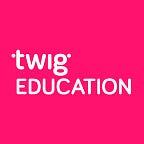8 Tips to Tackle Distance Learning
Over the last few months, teachers and students have had to adapt to distance learning, which comes with a whole host of new challenges. Since most of us are unlikely to get back full-time to a normal classroom anytime soon, it’s important to find ways to make distance learning as successful as possible.
There are several reasons why distance learning sometimes fails. One-to-one contact is important for motivation and accountability, and students are less likely to continually engage in the coursework without personal contact with teachers and classmates. It’s also more difficult for struggling students to receive the support they need if they’re not in the same room as their teacher.
On top of that, not all children have easy access to digital devices or a good internet connection. While teachers can’t control a student’s home environment, there are some things you can do to ensure your students stay engaged, challenged, and motivated.
Here are our top tips for how to successfully navigate a distance learning environment.
- Make it fun
This one might seem obvious, but it’s arguably even more important in a distance learning classroom. Students need to feel motivated to keep coming back to virtual lessons, engage with group work, and do their independent work. Change it up everyday and make use of digital resources like videos and interactive games, and hands-on activities.
2. Don’t lecture — prioritise conversation
Keep the explaining to a minimum, and prioritize video content, investigatory projects, or independent research to ensure that students familiarise themselves with a topic before coming to class. Reserve face-to-face time for conversations, feedback, and hands-on projects.
3. Make learning as collaborative and interactive as possible
This is trickier in a distance learning environment, but not impossible. Make use of break-out rooms (available with most video conference platforms) to encourage group work and/or discussion, assign practical projects as homework, and use interactive activities and games when suitable.
4. Make use of learning management systems (LMS)
Using LMS or other applications for sharing content can help immensely in a distance learning environment. For example, students can be asked to share research findings, or work on group projects in shared documents. In addition, many LMS allow you to easily share videos or other content with students as “assignments.”
5. Hold students accountable
Students who are naturally self-motivated are often more successful in a distance learning environment. With students who struggle, there are strategies you can use:
- Prioritise group assignments over individual homework, and make use of break-out rooms during class time to give groups dedicated time to catch up.
- Keep parents in the loop. Of course, parents aren’t teachers, and most will have jobs that take up their time, but most will likely be keen to keep their kids accountable when it comes to doing their schoolwork.
- Set clear individual goals and check learning
Look at how each student has performed recently and put together goals for them to achieve. Tailor your lesson content and assignments to meet these goals, and make sure to check students’ learning regularly. This will help motivate students to learn, and means you can keep track of student needs.
- Don’t forget about differentiation
It can be challenging to cater to every single student in a distance learning environment, but it’s perhaps even more important. There are a few things you can do to help:
- Put groups of students together in different break-out rooms. Depending on the task, it may be more helpful to either put students of the same ability together, or group students in a range of different abilities.
- Adapt homework and feedback to student needs. Not everyone learns in the same way, and some students may need additional help in certain areas.
- Find learning resources that allow for differentiated learning, such as videos that come with captions/voice-overs in different language levels, or different languages.
- Find reliable resources
Having a reliable resource that you trust and can use for a wide range of purposes is essential for successful distance learning. Twig Distance Learning does just that. Our distance learning solution is based on our full PreK/TK–8 standards-based science program. In addition to the full Twig Science program, Twig DL features additional support:
- Twig Coach videos are bite-sized studio quality coaching videos, presented by experienced teachers who lead students through each lesson, encouraging participation and engagement.
- Science Lab videos allow students to take part in experiments from home. Students can now investigate and participate in experiments with our digital labs created to support teaching hands on science.
We hope that these tips will help you feel more equipped to tackle distance learning in the future.
